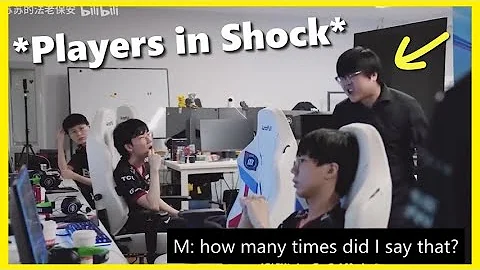
On the third day of wavering between OQ2 and PN3, Jason decisively chose OQ2.
Although this decision is enough for an ordinary college student to eat instant noodles for a month, as a "severe patient" of the game, it is difficult for Jason to give up OQ2, which he considers to be the best at present, in terms of content resources and various parameters.
However, after unboxing the product, I discovered that the space of quest2 is not very friendly to myopia. Even if I tried various positions, it would be very troublesome.
More importantly, Jason spent a day just on the activation step. From networking to developer mode, either the installation of Oculus Assistant failed, or the FB account was blocked. Every step was a trap.

After finally successfully activating it, Jason found that he was not interested in the games that came with OQ2.
So I chose to stream PCSteam. Monster Hunter World, Dark Souls 3, DOTA2, including the entire Assassin's Creed series are all games that Jason has been thinking about, including Alyx.
However, for Jason, the shortcomings of OQ2 still exist, that is, the screen glare is still too severe in the initial stage of wearing it. On the other hand, the viewing angle is completely insufficient, which leads to a bit of a loss of immersion.
In fact, if you put the above problems in the entire VR field, you will find that these are actually just the tip of the iceberg in VR product problems.

On the other hand, VR-related companies in my country have grown rapidly in recent years.
Tianyancha shows that in 2019, the number of VR companies in my country exceeded 3,000, and 3,400 new companies were added in 2020. By 2021, the number of registrations of VR-related companies has surged to more than 4,800, a year-on-year increase of 52%.
Everyone has seen the potential of VR.

Source: Tianyancha
This is not the first time that VR has been popular in the market.
The first two times were in the 1990s and 2016. During those two VR booms, the sales and market popularity of VR equipment were more lively than they are now.
However, with the ebb and flow of technology, regardless of fashionable concepts such as the metaverse, next-generation Internet, and web3.0, how has the current VR technology developed? Has it reached a turning point from quantity to quality?

1. The carnival of VR is just smoke and mirrors
It has been six years since the second wave in 2016, when Sony, HTC, Oculus launched the first generation of VR terminals for the mass consumer market.

(2016, HTC Vive)
Now, with the improvement of the VR industry chain, VR hardware shipments have exceeded the 10 million turning point.
According to IDC data, global VR shipments in 2021 will be 11 million units, breaking through an important inflection point in the industry with annual shipments of 10 million units; global VR headset shipments are expected to reach 20 million units in 2022, a year-on-year increase of 81.8 %, and VR headset shipments can reach 110 million units by 2025.

What’s more noteworthy is that not only has the shipment volume of VR hardware increased significantly, but VR content has also extended to the film field.
For example, Pico’s “3D Blockbuster Reigniting Plan” has successively launched copyrighted resources on the platform including movies such as Marvel series, Transformers, Blade Runner , and Frozen.
Extending the time dimension, without hardware, the entire logic of human-computer interaction no longer exists. If the Internet era is computers and the mobile Internet era is smartphones, then the third era is VR and AR devices.
The current development of VR equipment seems to provide an entrance to all virtual scenes.

So, how imaginative is VR hardware?
Take VR movies as an example. VR equipment has surpassed the concept of 3D and  D movies . Without the limitation of time and space, countless science fiction scenes and content can be created. This undoubtedly gives VR movies a great imagination. .
D movies . Without the limitation of time and space, countless science fiction scenes and content can be created. This undoubtedly gives VR movies a great imagination. .
In terms of hardware resolution, the screens of current mainstream VR glasses are all binocular 4K. When the rendering is done well, it is very sufficient. Even when watching videos, you can hardly notice the pixel particles. It can be said that on this basis, the requirement for video playback has also reached 4K resolution.
However, now VR technology is also facing technical challenges.
According to the CICC research report, near-eye display technology has considerable value and is a key layout area for technology giants.

Since near-eye display technology plays a decisive role in the product performance and user experience of VR/AR hardware, optics and display are core components of VR/AR and account for a relatively high value.
According to data from the Leading Research Institute, the optical + screen part of VR head-mounted equipment accounts for about 40% of the value.
To this end, the content covered below is mainly about display technology and VR head-mounted device optics.
In fact, VR hardware is a relatively general term. Current products include VR all-in-one machines, VR headsets, VR mobile phone boxes.

VR all-in-one machine means that the device integrates display equipment and processing equipment and can be used independently; VR head display means that VR glasses are just a display and the processor needs to be connected externally; VR mobile phone box is a pair of glasses that can be used by putting a mobile phone into a VR box .
However, for smart hardware manufacturers, whether it is VR wearable devices or other categories, the development path is basically: hardware + content ecology. While improving the quality of hardware, they use high-quality content to attract users, and through hardware to software Ecological closed loop continues to expand the market.
However, at present, these are just "imaginations" for the VR field, and the current hardware technology is far from achieving 100% immersion.

Let’s look at display technology first. In order to create a virtual world with a strong sense of presence, the main parameters that affect the experience in the display part are PPD, Fov and latency (Lantency).
PPD (Pixel Per Degree) is the pixel density of and , which determines the clarity of the display.
Since PPD is affected by FoV (field of view), using the industry-recognized PPD=G0 as the standard, 100°FoV (VR headset immersion starts from ~800FOV and increases as the angle increases), you need to do Up to 6K per eye, currently only PIMAX’s headset to be released claims to have achieved this value.
And the delay will involve more aspects, including tracking, transmission, simulation, rendering, screen display, etc., which will all affect the size of the delay.

One of the most common ones is screen display. If the VR hardware fails to meet the standard VR frame rate (90Hz, 120Hz for interactive games), once the head moves too fast, the delay will easily increase, which will cause discomfort to some users.
If compared with the lifelike immersion achieved by a frame rate of 1800Hz that is believed in the market, the current highest HMD (near-eye displays) are only the 120Hz PN3 (Pico NEO 3) and OQ2 (Oculus Quest 2
).
Although PN3 and OQ2 are completely sufficient for the low frequency of VR use in the current market, there is still a clear distance between them and the real "fake".

However, there is no way to improve the high refresh rate and high resolution. Currently, the display solution used by almost all VR hardware is Fast-LCD. It is undeniable that LCD is more delicate in display and has a stable lifespan, but in terms of power consumption and In terms of contrast and smear, we still have to look at the LED (Micro-OLED/Micro-LED) solution.
At present, LED display solutions are also the development direction of VR manufacturers.
During the International Display Week on May 10, BOE (BOE) released a number of world-first technology products from the three major display technology brands ADS Pro, f-OLED, and α-MLED, as well as Metaverse, naked-eye 3D, smart cockpit, etc. Three new-generation cutting-edge applications have made a strong return to SID offline exhibitions.

focuses on the domestic VR market. Regarding LED solutions, domestic companies have indeed begun to develop LED modules.
For example, AR start-up Kure Technologies announced on June 14 that it is joining hands with TSMC; on June 13, Nationstar Optoelectronics added the concept of "Micro LED"; on June 13, Longli Technology's MiniLED VR products have been delivered to Finnish and North American companies; On June 16, Apple partners built an ultra-high-resolution Micro OLED FMM research production line...
In fact, MiniLED is more like an LCD that has been greatly improved in color, while Mirco OLED has extremely high The pixel density of
(2560x2560) is different from MiniLED in that although Mirco OLED has the colors of OLED, it is difficult to expand due to the extremely high pixel density. Even if it is expanded, the cost will increase.
From this point of view, the application of LED seems to be a very good display solution, provided that C-end consumption is not considered.

However, the reality is exactly the opposite. The current Micro LED yield rate is still too low, and even if mass production can be achieved, Micro LED still does not have the conditions to enter the C-end market due to high costs.
From another perspective, even if VR manufacturers have reached the stage of 100% immersion through stacking materials at the technical level, the exploration of portability on VR hardware is not that fast, not to mention that the current immersion is far from 100%. degree.
But this does not seem to prevent some manufacturers that have developed OLED/LED modules from attacking portable VR hardware (eye-cup VR to be precise).

二 The short-term outbreak of VR hardware still needs to wait and see
On June 22, Ming-Chi Kuo, known as "the strongest Apple analyst on the surface", lowered his forecast for Meta VR shipments, which quickly caused a change in market sentiment.
On the same day, Goertek responded to the limit , Luxshare Precision also fell by more than 5%, Lens Technology , Transsion Holdings , Pengding Holdings, etc. also followed suit.

From a financial perspective, Meta’s VR equipment has a huge market share. According to data from research organization Counterpoint Research, by the end of 2021, Meta Quest2’s cumulative shipments will exceed 10 million units, and its cumulative shipments are 1.5 times that of the second largest competitor, Sony PSVR.
Meta spent money in exchange for a leading market share, and has become the "leading brother" in the field of VR equipment.

has a far leading market share, but the server industry research report of an existing brokerage believes that although Meta has maintained its capital expenditure forecast, its investment in AI infrastructure has begun to turn conservative.
Meta reduces investment in VR hardware, which helps domestic brands sell overseas. China’s head-mounted VR hardware, content/service market is entering a period of rapid growth.
According to Soochow Securities statistics, there are many A-share listed companies involved in the major fields of chips, optics, displays, complete machine assembly and other components of VR equipment.
Goertek has become the core OEM of Sony PSVR and Oculus, the two major manufacturers of VR hardware, in 2016. In the same year, the shipment volume of mid-to-high-end VR/AR products accounted for more than 70% of the world.
From 2018 to 2021, the operating income contributed by Goertek’s smart hardware products has also grown rapidly, reaching approximately 6.6 billion yuan, 8.5 billion yuan, 17.7 billion yuan and 32.8 billion yuan respectively.

However, the shortcomings of VR hardware are still obvious.
First, the dilemma of portability and visual effects.
To be portable, it must be small and light enough. However, as far as the current FOV technology is concerned, the long viewing angle of FOV is based on the length of the VR body, while short-focus VR is designed through the optical system and no longer requires a long space. VR body, in this case the FOV is naturally difficult to enlarge.

When reading content on the screen, binocular vision covers about 120°, but is only effective for eyes in a fixed position. If we look at real-life scenarios, not only are human eyes often scanning many things in a short period of time, including many scenes, it can be said that the field of view perceived by humans is actually much more than 120°.
From the concept and nature of VR, there are practical requirements for the size of the FOV.
According to official data, the average FOV of VR products currently on the market is 100°, among which the FOVs of Samsung Odyssry, HTC Vive
Pro, Pico Neo, Quest and other products are 110°, 110°, 101°, and 100° respectively.
Obviously, these values are generally smaller than the upper, lower, left, and right limits of the human eye, so it is difficult to perceive surrounding things in VR scenes in advance.

On the other hand, short-focus VR also needs to be considered for myopic users.
According to the white paper, the number of myopia patients in my country has exceeded 600 million. In terms of age and occupation distribution, "students" aged 20 to 24 account for the highest proportion, exceeding 40%.
This means that myopic people are a group that must be considered in the development of short-focus VR.
Although the current short-focus VR generally comes with myopia adjustment, for example, arpara is adjustable from -100 to 500 degrees. However, it only has myopia adjustment for the time being. Since everyone's astigmatism is different, there is currently no astigmatism adjustment function.

In addition, in addition to display technology, optical design is also one of the bottlenecks in the explosive expansion of VR.
It is difficult for the human eye to see objects within 7cm of ourselves. A normal VR headset is between 3cm and 7cm away from the human eye, which involves the lens technology of the VR headset.
The VR headsets on the market first used a single lens. The single lens is used to change the shape of the incident light, and then the incident light passes through the lens of the human eye, thereby changing the defocus that occurs when objects are within 7cm of the human eye. .

However, whether it is the single lens in the past or the Fresnel lens , there is currently no solution for both lenses in the VR market.
uses a lens with fewer threads, which helps focus the beam and improve contrast, but the clarity of the image will be compromised. Although the multi-threaded lens can see a clearer image, the light cannot be focused on one point and the curvature is always incorrect.
It can be said that Oculus, HTC, and even other VR manufacturers want to create the lightest and smallest head display. These are all problems that need to be faced.

3. Is VR content the core element?
Developing the VR ecosystem is what is really being done in the market. Among them, the most discussed one is VR content, because the lack of exciting enough VR content has been an important factor hindering the sales of VR application hardware so far.
Judging from the current information on the market, domestic Pico and Qiyu 3 are new products released in 2021. Basically, these two companies will not release new VR devices in the next year or two. Developing the ecosystem and grabbing the market will be the two The main work of the company in the past two years.
takes the development of ecology as an example: it basically focuses on introducing high-quality overseas content.

There are basically no developers in China. In the next two years, domestic VR changes will take Pico as an example. The biggest change should be that the ecology will be more obviously improved, further shortening the ecological distance with Quest 2.
However, it is worth noting that on January 10, Tencent planned to acquire game mobile phone company Black Shark Technology . After the acquisition, Black Shark will be merged into PCG (Platform and Content Group), and its business focus will shift to VR equipment as a whole.
Admittedly, it is unrealistic for Tencent to continue to rely on software to gain a foothold in the Metaverse. Therefore, regarding Tencent's operation, the market unanimously believes that Tencent is "opt in if you can't beat it."
Looking at this from another perspective, major manufacturers are constantly pouring into the VR field. Can current VR content support the demand for VR hardware?

Take the gaming field as an example. The most popular ones must be Alyx and Steam.
In March 2020, V agency released the high-quality 3A-level VR game "Half-Life: Alyx". With its exquisite graphics and real interactive experience, the game has gained high praise from major media and has become a second-generation VR game. The iconic masterpiece of the generation VR heavy game.
In addition, this product subverts the inherent form of VR games and promotes game innovation and quality improvement.

According to Steam data, among VR-related games with more than 100 reviews, the praise rate of newly released VR games in 2021 reached 95%, while the praise rate in 2016 was only 80%. Benefiting from the rapid improvement in the quantity and quality of content, the monetization capabilities of games have been enhanced, and the income of application developers has continued to increase.
However, according to Qingting.com data, as of April 2022, Steam VR has the largest amount of content, with a total of 6,464 games and applications. During the same period, the number of Oculus, SideQuest, and APP Lab contents were 1,738, 3,052, and 1,074 respectively. In addition, the Steam platform continues to attract user traffic through high-quality VR content.

Judging from the speed of VR headset replacement, the VR games currently on the market are enough to support current VR hardware.
However, for manufacturers, the health of users determines the life or death of the product. If users do not have good enough product quality to support them after purchasing hardware, users will also be lost.
Some people in the market believe that the current consumer market for VR headsets has not really opened up. Various manufacturers are in urgent need of forming stable profit models based on their own characteristics under the new trend. A new round of competition has begun, and manufacturers need to focus on the construction of a content ecosystem. , to increase consumers’ purchase intention and motivation to continue spending in the app store after purchase.

However, this is based on the manufacturer's perspective, which is correct but not completely correct. Because if you look at it from the user side, hardware quality and VR content should be complementary and strongly coupled.
Furthermore, looking back at various major industries, very few companies can achieve profitability in the early stages of development, and the same is true for the VR track.





















